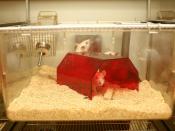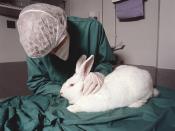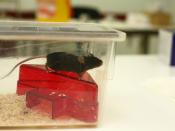Why are animals used as test subjects of medications that the human race will eventually rely on? The answer lies in all the advances that have arisen due to the ongoing testing. From these tests we have created cures for many diseases. However, these tests tend to be very unreliable in some areas. When testing Penicillin if we had just tested it in Guinea Pigs we most likely would have declared it a toxic drug.
Medical testing on animals has proved to be very positive in developing vaccines and treatments from the most minor burn to serious diseases. There were 2,656,753 procedures using animals in 1999. Over the last 20 years, the annual number of animal experiments has been cut in half. In 1997 this number was at its all time low in 20 years. Higher standards of animal welfare, scientific advances and stricter controls are responsible for that decrease.
Out of all of the animals used for testing, 86% are rats, mice and other rodents. All are specially bred laboratory species. The reason rats and other rodents are so popular are because of their small size, low cost and ease in handling. These rodents can also be bred with natural defects to simulate models of human diseases. Mice have been bred with leukemia, breast cancer, and many other types of cancer, which allows new treatments to be tested first on them and not humans. Mice are also the most common mammals in genetic research. Because so much is known about their genetic makeup, scientists can breed them so they develop human diseases that can then be studied. Aging studies along with product safety, virology, and radiation exposure have also been tested on these mice. Fish, amphibians, reptiles and birds fill a 9% gap in the animals used for...


